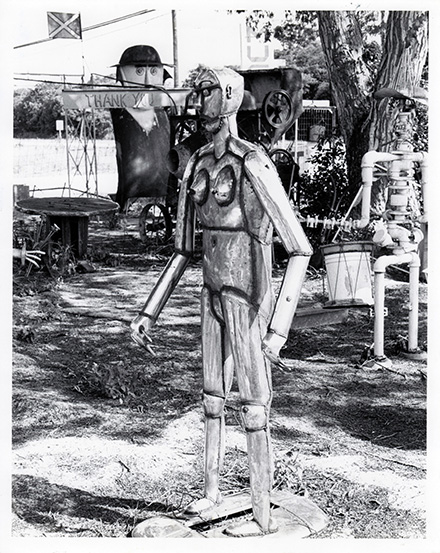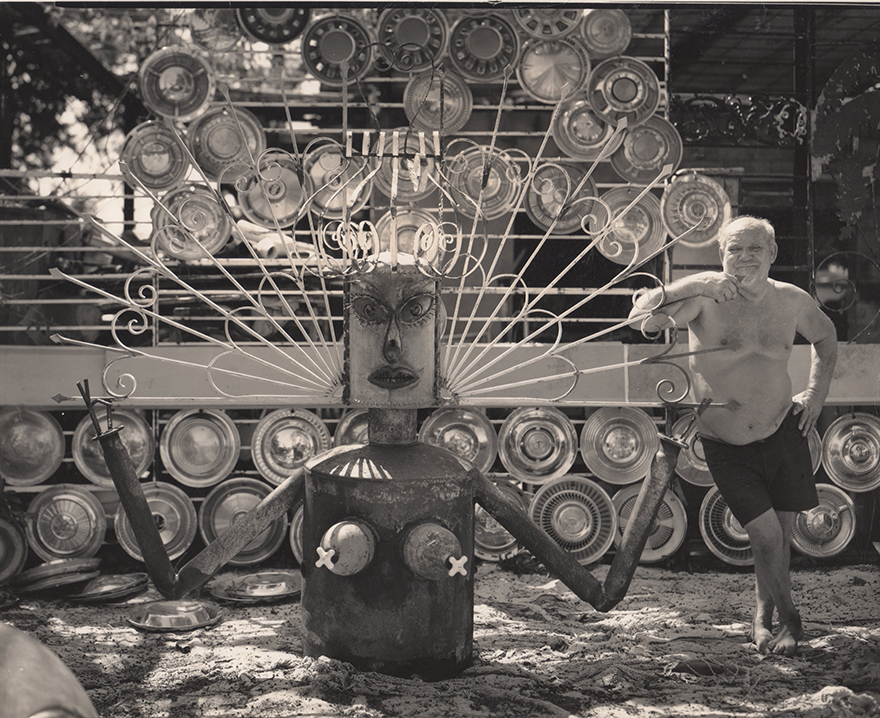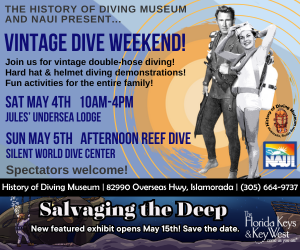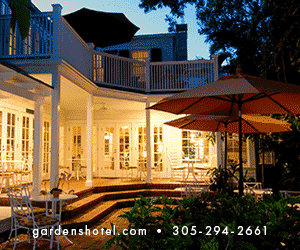 Stanley Papio seldom wore shoes. The 34 year old retired Army welder grumbled that the flying sparks always ruined them and besides, it was a whole lot cheaper to get burned feet than to keep buying new shoes.
Stanley Papio seldom wore shoes. The 34 year old retired Army welder grumbled that the flying sparks always ruined them and besides, it was a whole lot cheaper to get burned feet than to keep buying new shoes.
After serving in WWII, Papio put down roots along an isolated stretch of US 1 in Key Largo. The year was 1949 when the island was largely uninhabited and neighbors were few and far between.
When Papio opened his own welding shop, locals took to calling him “Barefoot” Papio and he soon became Key Largo’s most in-demand shoeless tradesman.
But while Papio had an aversion to wearing shoes, he did have a penchant for collecting all kinds of junk metal – old cars, washing machines, bed springs and any-thing else that he could re-weld into interesting artifacts. No one really paid much attention to Papio’s funky junkyard until hungry real estate developers descended upon the island and new neighbors started cropping up all around him. What he saw as potential art, the myopic interlopers simply called junk. They demanded that Papio immediately remove the mash of metal from his property.
 But the rebellious welder-turned-metal-artist would have none of it. Papio saw art where others saw junk and refused to comply. After being repeatedly arrested for code violations, Papio turned up the heat and began welding his mounds of scrap metal into fantastical works of art. Now mind you, this was decades before it was hip to be rusty. As Papio’s whimsical designs began to take shape, so grew his re-bellious nature.
But the rebellious welder-turned-metal-artist would have none of it. Papio saw art where others saw junk and refused to comply. After being repeatedly arrested for code violations, Papio turned up the heat and began welding his mounds of scrap metal into fantastical works of art. Now mind you, this was decades before it was hip to be rusty. As Papio’s whimsical designs began to take shape, so grew his re-bellious nature.
Anthropomorphized car hoods and refrigerator bodies with titles like “Local Hassles # 1” and “Greedy Grit the Contractor” stirred the political pot but also garnered strong support from a growing community of art lovers.
True to his irreverent nature, Papio renamed his welding shop “Stanley’s Art Museum” and charged a quarter for admission. His roadside exhibition of folk art for travelers, as well as a repository for his often comical and caustic creations, was a huge hit. Before long, art critics were visiting Papio’s “museum.” They appreciated his creativity, imagination and remarkable welding skills.
Papio’s work became so popular that he began exhibiting it outside his “museum,” including a European tour in 1981 as part of the US State Department’s exhibition, “America Now.” His name was also recorded in encyclopedias of native and folk art and offers to buy his sculptures climbed into the thousands.
Papio subsequently planned to take his work on a road tour across America. Unfortunately his dream never came to fruition. At the age of 67, he died suddenly of a heart attack, and with it went his vision of a traveling exhibition.
 But the story doesn’t end there.
But the story doesn’t end there.
Thanks to the Key West Art & Historical Society, you can now enjoy many of Stanley Papio’s works at the Fort East Martello Museum & Gallery in Key West. The permanent exhibition includes more than 100 of his restored sculptural objects and other three-dimensional constructions from the whimsical to the dramatic. It also explores Papio’s life in Key Largo, particularly focusing on the issues he had with his neighbors and how the rebellious Papio fought back.
The exhibition is truly a sight to behold. You can see it daily from 9:30 am – 5 pm at the Fort East Martello Museum & Gallery, 3501 S Roosevelt Blvd, Key West. Info: 305-296-3913; kwahs.org.














